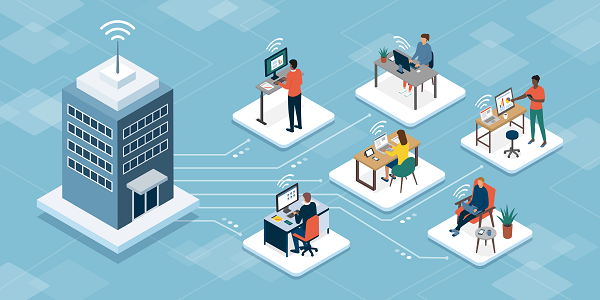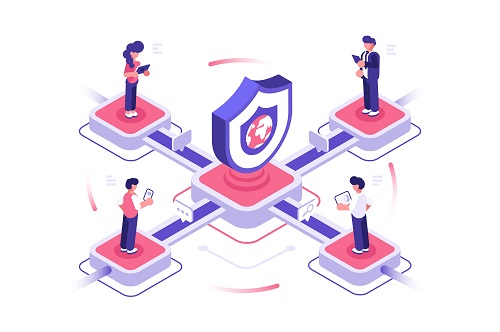Remote eDiscovery: Uncovering eDiscovery Best Practices From Home
When businesses and governments began shutting down due to the COVID-19 virus, it fast-tracked the slow and cautious transition to remote work begun by legal service providers.
LSPs had already begun finding success operating in remote environments, using the cloud for eDiscovery data storage, processing, review, and analytics.
However, it wasn’t until companies were forced to send their employees home to work that traditional legal departments and law firms began adapting to remote work environments. This led to finally upgrading, optimizing, and strengthening their infrastructure to accommodate this new normal.
While this transition was a nerve-wracking experience for some, statistics tell us that remote work environments are not only possible but preferred:
- 71% of companies have a new, positive view of remote work environments. (IDG).
- 59% of remote U.S. workers would prefer to continue working remotely. (Gallup).
- 69% of remote U.S. workers reported their productivity levels are the same or higher when working from home. (Citrix).
With a more productive eDiscovery solution, your LSP is set up for success. Learn about four other ways your organization can build value and boost margins in our ebook here.
The Benefits of Remote eDiscovery Tools
As foreign a concept remote working seemed to be, the benefits were obvious from the very beginning. Roadblocks were quickly reconciled, increasing efficiencies and reducing costs associated with eDiscovery.
This was expedited by the realization that while personnel were becoming increasingly more dispersed, the eDiscovery data they were working with was becoming more centralized due to the cloud. Secured cloud environments allowed for a more efficient and effective workflow to collect, process, host, review and produce critical data.
Other benefits of remote eDiscovery tools include:
- Lower-touch processes so you have fewer discoverable copies and less movement and enhanced control of data
- No geographical workforce restrictions so you can bring in the best people no matter where they live
- Easy scalability for near-instant provisioning or decommissioning
- Cost-effectiveness that allows you to shift from CapEx to OpEx
How Secure is Remote eDiscovery?
For some traditionalists, as well as others that are simply more cautious by nature, there’s a question of data security that has them hesitant to embrace a remote eDiscovery solution. However, there’s nothing to fear with the right eDiscovery solution.
Simply put, eDiscovery cloud computing provides a secured digital environment that protects the integrity of your data. To ensure this, there are certain security protocols your LSP must follow to guarantee your data security.
- Personnel should only use company devices or assets when working remotely
- Data encryption must be used in transit
- Multi-factor authentication must be deployed
- Secured connectivity must be ensured for all employees
With these protocols in place, your data is secure from all but the most devious and skilled cybercriminals. The only thing you’re missing is the perfect partner to provide a solution that makes sense for you and your clients.
The CloudNine Remote eDiscovery Solution
Offering speed, security, and simplicity, CloudNine Explore empowers LSPs with a remote eDiscovery solution that allows you to investigate issues, assess risks, confirm compliance and begin early case assessment quickly and easily.
More importantly, with CloudNine Explore, you’ll maintain the highest quality of data processing by leveraging these benefits:
- Process as many as 1 million records per hour
- Deploy CloudNine anywhere through a single workstation deployment
- Easily scale up or down across multiple secured devices with mobile access
- Effectively manage remote teams with powerful administrative and user controls
- Remove bottlenecks by reprioritizing projects and reviewers as needed
- Use deduplicate, filter, and search functions to reduce your data and hosting fees
Discover what CloudNine Explore can do for your remote eDiscovery team here.
Finding Value in CloudNine Explore’s eDiscovery Tool
CloudNine Explore gives you early visibility into the size and scope of your eDiscovery data so you can determine costs upfront. By insourcing your eDiscovery solution, you can cull data before you send it out, resulting in a significant ROI by:
- Reducing costs associated with data collection, processing, hosting, and review
- Mitigating risks by identifying problems easier and quicker
- Opting to deploy on-premise or in the cloud
While most eDiscovery solutions only work with traditional datalike documents, emails, and spreadsheets, CloudNine now has the ability to work with modern data like:
- Communication (texts, MMS, etc.)
- Computer Activity
- Geolocation
- Financial Transactions
- Social Media
To learn more about our modern data solutions, read the announcement on our acquisition of ESI Analyst.
By providing you with the ability to work remotely, scale quickly to take on more clients, or pivot for new types of data, CloudNine Explore allows you the flexibility to explore your options as an LSP so you can decide best practices for your organization and your clients.
To see firsthand how CloudNine Explore can improve your remote eDiscovery solutions, schedule a free demo today.























